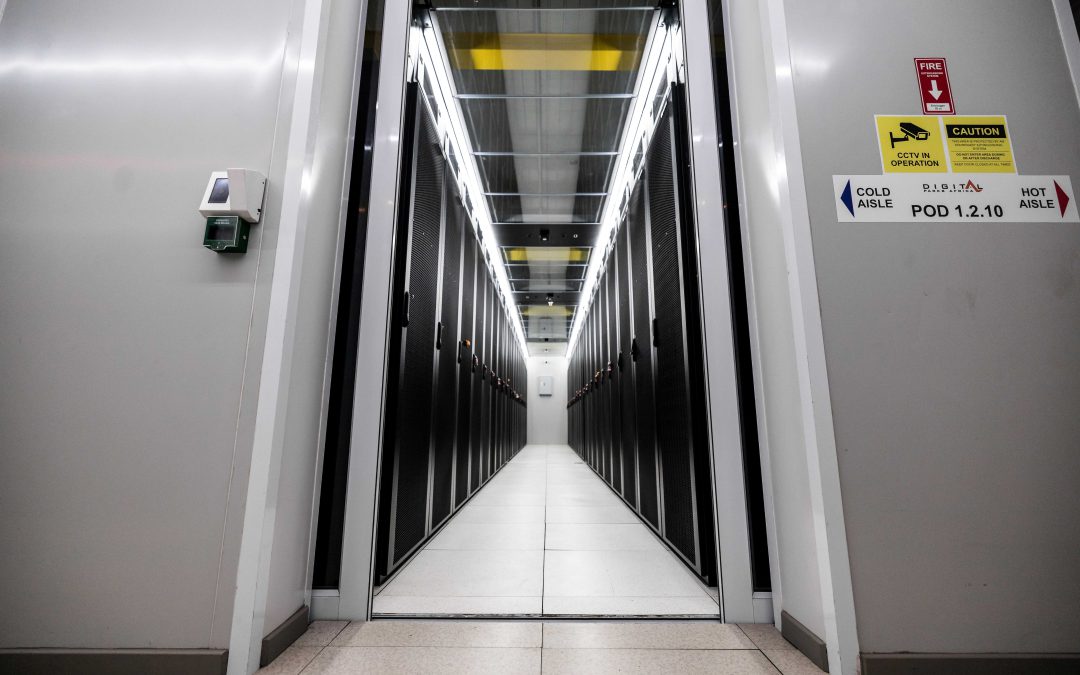By Wiaan Vermaak, Group Chief Commercial Officer at Digital Parks Africa
Modern data centres are evolving into agile, high-efficiency ecosystems designed to meet rising digital demands. What started as basic mainframe storage has transformed into globally distributed, hyperscale infrastructure powered by cloud computing.
The rise of virtualisation and cloud-native architectures has replaced energy-intensive legacy servers with scalable solutions, leading to enhanced operational speed, flexibility and resource optimisation for today’s Artificial Intelligence (AI) -ready environments.
A mere decade ago, data centre design was largely shaped by the available power for IT infrastructure. Design parameters were straightforward: a 1MW data centre (1 000 kilowatts) typically supported around 500 racks, based on an average consumption of 2kW per rack. That was the norm: a blended average that guided capacity planning.
In terms of physical footprint, each of the 500 racks would occupy approximately 0.8 m², totalling in excess of 1,500 m² when factoring in utility and support infrastructure. The design logic was simple: size was driven by rack count, and rack count was driven by power availability.
Exponential power density increase
Today, the landscape has shifted dramatically, driven by the rise of AI and the exponential increase in power density. That same 1MW now supports just 15 racks. The ratio has collapsed, not because of inefficiency, but because AI workloads demand unprecedented compute intensity.
Modern data centre design focuses on power density rather than physical size, with footprints requiring 10kW per rack or more. This change necessitates a rethinking of power delivery and management in limited spaces. A Data Centre that does not apply the correct future-proof design philosophy could easily face limitations in power availability before they run out of space.
The surge in data centre power demand is primarily due to high-density GPUs. Unlike traditional cloud infrastructure that used general-purpose compute, the rise of GPUs represents a fundamental paradigm shift.
GPUs are essential for AI, especially in training large language models (LLMs). While inferencing, like in ChatGPT, uses power, the real intensity is in the training phase, which involves processing vast datasets to recognise patterns and build models for intelligent responses.
From linear to dynamic designs
Data centre planning has evolved from a linear approach to a dynamic, scalable model due to the rapid pace of technological advancement, particularly with high-density GPU workloads. The old “build it and they will come” philosophy is now obsolete; infrastructure must be designed for immediate needs while allowing for rapid, modular, or phased expansion.
As AI workloads intensify, traditional air cooling struggles to keep pace, especially with GPU-heavy deployments. Liquid cooling offers a smarter alternative: non-conductive fluid is circulated directly onto heat-generating chips, then cooled externally and recirculated. It is precise, scalable, and far easier to maintain than more extreme methods.
Immersive cooling, where servers are submerged in non-conductive fluid, delivers superior thermal performance but introduces significant operational complexity. Servicing submerged hardware requires transitioning between wet and dry environments, complicating maintenance and limiting broader adoption.
That’s why the industry is gravitating toward direct-to-chip liquid cooling, which strikes the right balance between efficiency and practicality, making it the preferred choice for modern, AI-ready infrastructure.
Key considerations for colocation
For any business considering colocation in a data centre, the first step is understanding the current cost structure, whether on-prem or in another facility. Hidden costs like air conditioning, site PUE, cleaning, security systems, generator maintenance, and fuel can add up quickly. Without a clear view of these expenses, it is impossible to assess the true value of a data centre offering.
The second consideration is scalability. A data centre must not only meet your needs today but also be able to adapt to your business tomorrow and next year. That requires a close, consultative relationship, one where the operator understands your growth trajectory and reserves space and capacity accordingly for your business to grow. It is not just about hosting; it is about strategic alignment.
Third, support and accessibility are critical. Beyond certifications and compliance, what matters most is whether help is available when you need it most. If a power supply overheats at 1am, can someone on-site swap it out immediately? Or are you sending an engineer across town in the middle of the night? Remote hands, real-time responsiveness, and operational proximity make all the difference.
Ultimately, a data centre must be more than a facility; it must be a partner. One that understands your business, supports your growth, and delivers value with transparency and reliability.


